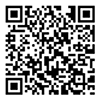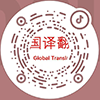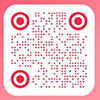Specific Solutions
Translating Pharmaceutical Package Inserts
By Elite Translation
In the pharmaceutical industry, a single sentence can carry significant clinical, legal, and ethical consequences. Nowhere is this more evident than in the translation of drug package inserts, also known as prescribing information, medication guides, or patient leaflets.
These documents are not just user manuals — they are regulated medical texts that impact patient safety, compliance, and international market access.
Why Is Translating Drug Inserts So Critical?
Unlike general marketing content or internal documents, package inserts must meet strict standards set by:
National and international regulatory bodies (e.g., FDA, EMA, NMPA)
Medical professionals and pharmacists
End-users and patients, who may not have scientific training
A poorly translated insert may lead to:
Misunderstanding of dosage or administration
Incorrect identification of contraindications or side effects
Legal liability for noncompliance with regulatory guidelines
This makes accuracy, consistency, and clarity absolutely non-negotiable.
What Makes Pharmaceutical Translation Unique?
1. Medical Terminology and Regulatory Language
Drug inserts are full of technical terms such as:
Indications and usage
Adverse reactions
Pharmacokinetics and contraindications
Dosage and administration protocols
The translator must not only be fluent in two languages, but also proficient in pharmacology and regulatory writing.
2. Different Versions for Different Audiences
Professional Leaflet: intended for doctors and pharmacists
Patient Leaflet: simplified language for public readability
Each version must be adapted not only in tone but in terminology depth, without compromising legal or scientific precision.
3. Cross-market Harmonization
Multinational pharmaceutical companies often need to adapt one document for multiple jurisdictions. This requires:
Alignment with local terminology guidelines
Adaptation to region-specific health policies and labeling formats
Compliance with Good Translation Practices (GTP)
Our Process at Elite Translation
At Elite Translation, we approach pharmaceutical insert translation with a specialized process:
Bilingual Medical Experts
Translators with medical or life sciences background, not just language professionalsTerminology Management
Use of validated medical dictionaries, ICH terms, MedDRA, WHO references, and client-specific glossariesRegulatory Awareness
Compliance with region-specific requirements (e.g., CFDA/NMPA for China, EMA for EU)Multistage QA Workflow
Translation → Bilingual Review → Medical Editing → Formatting & Layout CheckConfidentiality & Compliance
Full NDA protection, ISO-compliant workflows, and secure data handling
Common Use Cases
Drug registration dossiers
Packaging inserts for export or submission
OTC medication labeling
Clinical trial documentation
Hospital formularies and hospital-use inserts
Whether you’re submitting to a local authority or entering a new market, accurate translation of your package insert is essential—not optional.
Final Thoughts
In an industry where every word can affect a life, translation is not just about language—it’s about responsibility.
At Elite Translation, we specialize in pharmaceutical translation across Chinese, English, French, and other major languages. Our clients include drug manufacturers, CROs, hospitals, and regulatory consultants.
Let us help you make your product safe, compliant, and accessible—no matter the market.


















